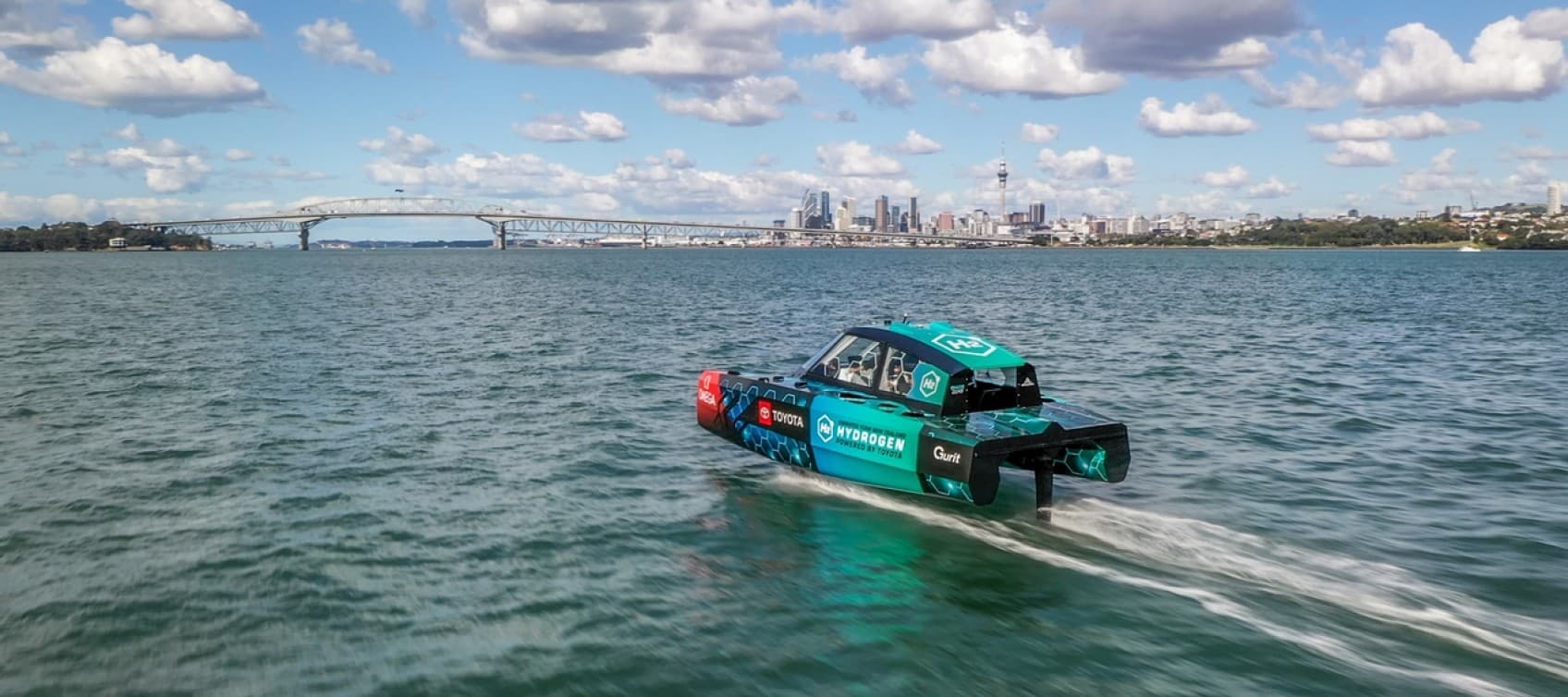Team New Zealand has developed a hydrogen-powered chase boat that is showing the world how powerful marine hydrogen can be. In 2021, the current America’s Cup holders were thinking about the team’s carbon footprint – could they develop a fast, responsive chase boat that creates no emissions?
Incredibly, it took only nine months for Team New Zealand to design, engineer, build and launch its new hydrogen-powered vessel: Chase Zero. Its performance has been astonishing, clocking up a top speed of 50.3 knots (93km/hr) and with an incredible 280km-plus range. That means Chase Zero can travel so far that it would take 825 litres of petrol for a regular chase boat to keep up – and those only have 800 litre tanks.
People are starting to see the potential for hydrogen in the marine space
Developing a hydrogen powered chase boat needed input from some hydrogen experts, so early on in the design phase, Emirates Team NZ reached out to Toyota and Global Bus Ventures to provide and integrate the hydrogen fuel cells for the boat. Then they needed to think about how to fill the boat with hydrogen, and for help with that they asked Hiringa, a green hydrogen production company.
“This has been a really exciting and impressive project,” says Amelia Rentzios, Head of Operations for Hiringa. “From the start our CTO had some input into the integration design, and we had to advise on what was possible around the usage and storage of hydrogen safely on the site. There were quite a lot of blank faces from the crew in the early days – I think a few didn’t really have full confidence in the hydrogen.”
Once Chase Zero was on the water though, and performing brilliantly with no carbon emissions, everyone was won over.
“Everyone at the base was super excited – immediately you could tell this wasn’t just a prototype for the sake of making headlines. There’s been an awesome vibe about the whole project. There has been so much positive press, and people are starting to see the potential for hydrogen in the marine space.”
How to refuel a one-off hydrogen vessel
On pilot projects like these, Hiringa puts together a Special Ops team to work on supplying and refuelling with green hydrogen. Hiringa organised a location compliance certificate for the Team NZ base, so the hydrogen could be stored on site and dispensed into the boat. The Special Ops team worked nights to refill Chase Zero so it could be tested during the day.

“To refill the boat takes 33kg of compressed hydrogen, which is supplied in exactly the same kind of integration as you’d get in any other hydrogen vehicle,” Rentzios explains. “We use a portable booster compressor, attached to a BOC tube trailer, with a hose at one end where the hydrogen comes out. There’s a nozzle on the hose and that plugs into the boat. For this pilot project, you need a trained ops team because it’s not a permanent, automated set-up, but otherwise it’s similar to one of our refuelling stations, which any driver can use.”
Next stop: the 37th America’s Cup in Barcelona
The design for Chase Zero has recently been upgraded, so the boat is out of the water for a few months for modifications – and then it will be shipped to Spain for use in next year’s 37th America’s Cup in Barcelona.
The design has also been made available to other syndicates, who are likely to build their own versions of a zero-emissions chase boat.
The entire project has been enormously fun to work on, says Rentzios, partly because it’s yet another positive sign of how the energy industry is transitioning to new types of energy and successfully solving new challenges.
“The next stage is thinking about what on-water refuelling might look like, and how we can design it so anyone can use the systems. Hydrogen has a really exciting future in the marine industry.”

